Acrylic yarns are some of the most widely used and versatile types of yarns available in the market today. These fibers are lightweight, soft, and strong, making them popular for many different types of crochet projects. They are known for their affordability, durability, and ease of care, making them a popular choice for both beginners and experienced crafters alike, and are often less expensive than natural fibers like wool or cotton. It is a great option for beginners, as it is easy to work with and forgiving of mistakes.
Also, acrylic yarns can be machine washed and dried, making them a great choice for items that will be worn or used frequently.
Acrylic yarns come in a range of colors, textures, and weights, making them suitable for a variety of crochet and knitting projects, including blankets, garments, and accessories.
In this article, we will take a closer look at acrylic yarns, including their history, manufacturing process, different types, and weights, and the best ways to use them in your crochet and knitting projects. Whether you’re a beginner or an experienced crafter, this article will provide you with all the information you need to know about acrylic yarns and how to use them to create beautiful and functional handmade items.
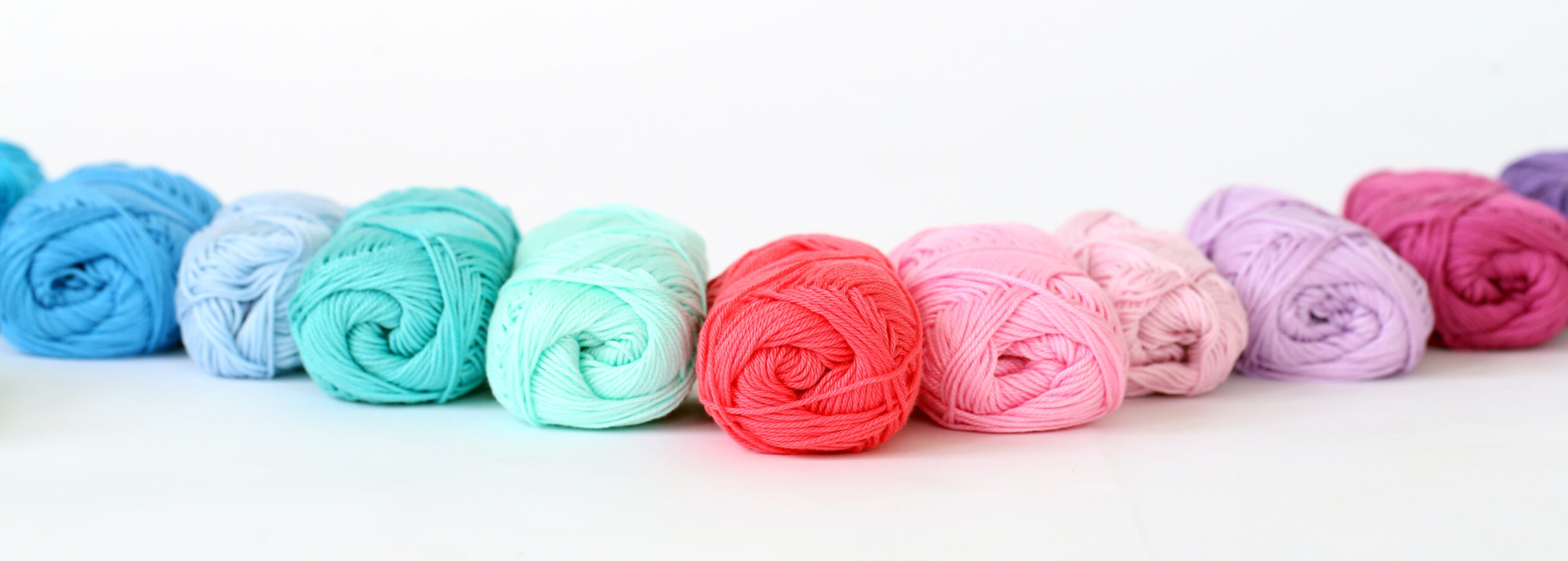
What does it make of?
Acrylic yarn is made from synthetic fibers that are derived from polymers of acrylic acid or acrylonitrile. These fibers are created through a process called “wet spinning,” in which a liquid solution of acrylic acid or acrylonitrile is forced through small holes, or spinnerets, to create long, continuous fibers. These fibers are then spun into yarns of various weights and thicknesses, which can be used for a wide range of crochet projects. Acrylic yarns can be used to create a variety of items, including blankets, hats, scarves, sweaters, and more.
The chemical process of making acrylic yarns:
It involves several steps:
- Polymerization: The first step is the polymerization of acrylic acid or acrylonitrile monomers to form a polymer. This is typically done using a chemical reaction that combines the monomers with a catalyst, under specific temperature and pressure conditions. The resulting polymer is a long chain of repeating units, known as a polymer chain.
- Solution spinning: In the next step, the polymer chain is dissolved in a solvent, such as dimethylformamide (DMF) or dimethylacetamide (DMAc), to create a liquid solution. This solution is then forced through spinnerets, which are small holes that are designed to create long, continuous fibers.
- Coagulation: After the fibers are formed, they are immersed in a coagulation bath, which contains a liquid that causes the fibers to solidify and become insoluble. This process involves the removal of the solvent from the fibers, leaving behind a solid, continuous strand.
- Drawing: The solidified fibers are then drawn or stretched to orient the polymer chains in a specific direction. This increases the strength and durability of the fibers, and can also affect the texture and appearance of the resulting yarn.
- Finishing: Finally, the fibers are washed and treated with various chemicals to remove any residual solvents or impurities, and to improve their appearance, texture, and other properties.
After this process, the fibers are ready to be spun into yarns of different weights and thicknesses, which can be used for a wide variety of crochet projects.
History:
The acrylic yarn was first developed in the 1940s as a synthetic alternative to wool. During World War II, wool was in short supply and the acrylic yarn was introduced as a more affordable and accessible option. The first commercially available acrylic yarn was produced by the Dupont Company in the United States in 1949 under the brand name Orlon.
The first acrylic fibers were made from a polymer called polyacrylonitrile, which was produced by polymerizing acrylonitrile monomers. The resulting fibers were soft, lightweight, and strong, with a texture and appearance that closely resembled wool.
Initially, acrylic fibers were used primarily in the production of clothing and other textiles, but in the 1950s and 1960s, they began to be used in the production of yarns for knitting and crocheting. Acrylic yarns were particularly popular among hobbyists and crafters, who appreciated their affordability, ease of care, and wide range of colors and textures.
By the 1970s, acrylic yarn had become the most popular type of yarn in the United States. It was widely available in a range of colors and weights, and was used to create everything from sweaters and hats to afghans and blankets. Acrylic yarn’s popularity continued to grow in the 1980s and 1990s as new blends were introduced that combined acrylic with other fibers such as wool, cotton, and silk.
Over time, advances in technology led to the development of new types of acrylic fibers, including microfibers and high-performance acrylics. These fibers have even better properties than traditional acrylics, such as increased softness, moisture-wicking capabilities, and improved strength.
In the early 2000s, concerns about the environmental impact of synthetic fibers led to a renewed interest in natural fibers such as wool and cotton. However, acrylic yarn remains a popular choice for its affordability and versatility. It is often used in large-scale projects such as blankets and throws, as well as for children’s clothing and toys due to its easy care and durability.
Today, there are many different brands and types of acrylic yarn available, each with its own unique properties and characteristics. Some of the most popular brands include Red Heart, Lion Brand, and Bernat. Acrylic yarn is also often used in combination with other fibers, such as wool or alpaca, to create unique and interesting textures and colors.
Different weights of acrylic yarn:
Acrylic yarns are available in a range of weights, from super fine to super bulky. Here are some of the different weights of acrylic yarns:
- Super Fine or Fingering Weight: This is the thinnest and lightest weight of acrylic yarn. It is typically used for delicate lacework, fine garments, and lightweight accessories.
- Fine or Sport Weight: This weight of acrylic yarn is slightly thicker than fingering weight yarn. It is ideal for lightweight garments, baby clothes, and accessories.
- Light Worsted or DK Weight: This weight of acrylic yarn is a bit thicker than sport weight yarn. It is suitable for a wide range of projects, including sweaters, blankets, and scarves.
- Medium or Worsted Weight: This is the most popular weight of acrylic yarn. It is versatile and can be used for a variety of projects, such as hats, gloves, and blankets.
- Bulky or Chunky Weight: This weight of acrylic yarn is thicker and heavier than medium-weight yarn. It is ideal for quick and easy projects like hats, scarves, and cowls.
- Super Bulky Weight: This is the thickest and heaviest weight of acrylic yarn. It is great for making warm and cozy blankets, sweaters, and scarves.
Each weight of acrylic yarn has its own unique characteristics and is suitable for different types of projects. It is important to choose the right weight of yarn for your project to ensure that you get the desired results
Countries:
Acrylic yarn is produced by a number of countries around the world. Here are some of the major acrylic yarn-producing countries:
- China: China is one of the largest producers of acrylic yarn in the world. The country has a well-developed textile industry and produces a wide range of yarns, including acrylic.
- Turkey: Turkey is another major producer of acrylic yarn. The country has a long history of textile manufacturing and is known for producing high-quality yarns.
- India: India is a major producer of acrylic yarn and has a large textile industry. The country produces a wide range of yarns, including acrylic, and is known for its affordable prices.
- Pakistan: Pakistan is a significant producer of acrylic yarn and has a well-developed textile industry. The country produces a variety of yarns, including acrylic, and is known for its high-quality products.
- United States: The United States is a major producer of acrylic yarn and has a large textile industry. Many popular brands of acrylic yarn are produced in the US, including Red Heart and Lion Brand.
- Japan: Japan is a significant producer of acrylic yarn and has a well-developed textile industry. The country is known for producing high-quality, innovative yarns.
- Germany: Germany is a major producer of acrylic yarn and has a long history of textile manufacturing. The country produces a wide range of yarns, including acrylic, and is known for its high-quality products.
Other countries that produce acrylic yarn include South Korea, Indonesia, Brazil, and Mexico.
Companies and brands:
Some of the most famous and popular brands of acrylic yarns include:
- Red Heart: Red Heart is a well-known brand of acrylic yarns, offering a range of products from super saver to soft and chic to with love yarn.
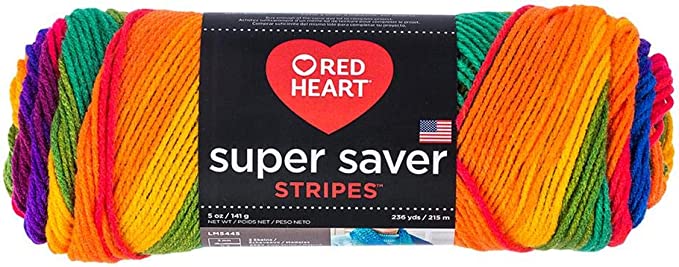
- Lion Brand Yarn: Lion Brand offers a range of acrylic yarns such as Vanna’s Choice, Wool-Ease, and Homespun.
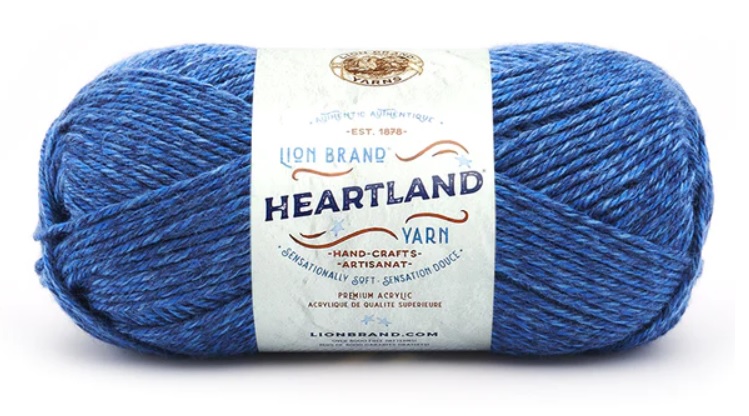
- Caron: Caron yarns include popular options like Simply Soft, One Pound, and Cakes.
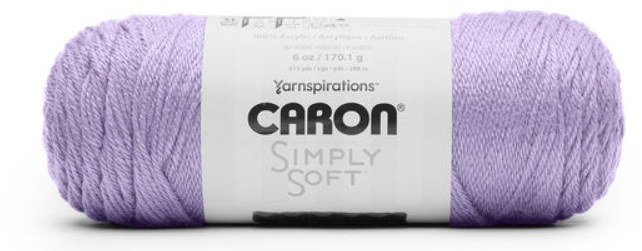
- Bernat: Bernat offers a range of acrylic yarns such as Baby Blanket, Softee, and Blanket.
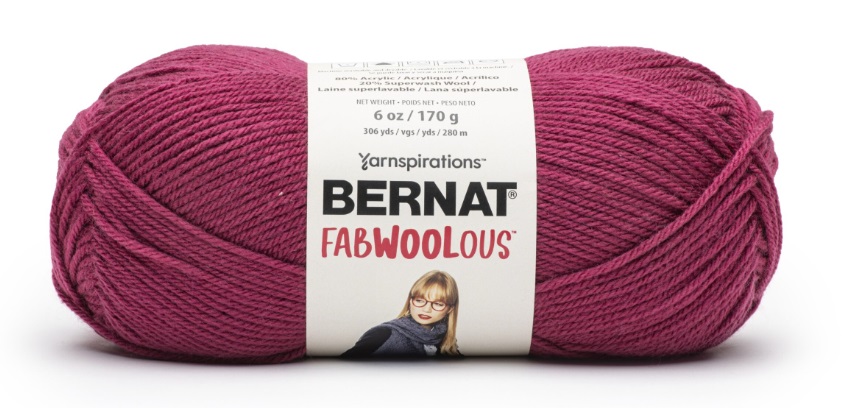
- Stylecraft: Stylecraft offers a variety of acrylic yarns such as Special DK, Wondersoft, and Life DK.
- Premier Yarns: Premier Yarns offer a range of acrylic yarns such as Deborah Norville Everyday, Anti-Pilling Everyday Bobbin, and Angel.
- Paintbox Yarns: Paintbox Yarns is known for its bright and bold colors of acrylic yarns, with options such as Simply Aran, Simply DK, and Simply Chunky.
- King Cole: King Cole is a UK-based brand offering acrylic yarns such as Big Value DK, Comfort Chunky, and Tinsel Chunky.
These brands offer a variety of weights, colors, and textures of acrylic yarns that are suitable for a wide range of crochet and knitting projects. They are popular among both beginners and experienced crafters and can be found at many yarn stores and online retailers.
These are just a few examples of the many companies that produce acrylic yarns. There are also many smaller, independent yarn producers that offer high-quality acrylic yarns, as well as a range of other fibers. When selecting an acrylic yarn, it is important to consider factors like quality, color, weight, and texture, as well as the reputation and values of the manufacturer.
here are some other manufacturers of acrylic yarns:
- Cascade Yarns
- Universal Yarn
- Plymouth Yarn
- James C. Brett
- Drops Design
- Patons Yarns
- Scheepjes Yarns
- Yarnspirations
- Rowan Yarns
- Debbie Bliss Yarns
- Sirdar Yarns
- Cygnet Yarns
- Katia Yarns
- Rico Design Yarns
- Garnstudio DROPS
Some tips for washing and caring the acrylic yarn:
Acrylic yarn is known for its ease of care and low maintenance, making it a popular choice for crafting projects. Here are some tips for washing and caring for acrylic yarn:
- Read the label: Always read the care label on your acrylic yarn before washing it. The label will provide specific instructions for washing and caring for the yarn.
- Machine washing: Most acrylic yarns can be safely washed in a washing machine. Use a gentle cycle and cool water to prevent stretching or damaging the yarn. You can use a mild detergent or fabric softener, but avoid using bleach or fabric softeners that contain bleach.
- Hand washing: If you prefer to hand wash your acrylic yarn, fill a sink or basin with cool water and add a mild detergent. Gently agitate the yarn in the water and then rinse with cool water. Avoid wringing or twisting the yarn, as this can cause stretching and damage.
- Drying: After washing, gently squeeze out excess water and lay the yarn flat on a clean towel to air dry. Avoid hanging or stretching the yarn, as this can cause it to lose its shape.
- Ironing: Acrylic yarn should not be ironed, as it can melt or become misshapen.
- Storing: Store your acrylic yarn in a cool, dry place away from direct sunlight to prevent fading and discoloration. You can also store your yarn in plastic bags or containers to keep it clean and dust-free.
By following these simple care instructions, you can keep your acrylic yarn looking its best for years to come.
How do acrylic yarns impact the environment?
Acrylic yarns can have a negative impact on the environment in a number of ways, although their impact is generally less severe than that of other synthetic fibers.
- Production: Acrylic yarns are made from petroleum, a non-renewable resource, and the production process involves the use of chemicals that can be harmful to the environment.
- Microfiber pollution: When acrylic yarns are washed, tiny microfibers can be shed and released into the water supply. These microfibers can eventually make their way into oceans and other bodies of water, where they can harm marine life and contribute to plastic pollution.
- Non-biodegradable: Acrylic yarns are not biodegradable, meaning that they do not break down naturally over time. This can contribute to landfill waste and other forms of environmental pollution.
- Energy usage: The production of acrylic yarns requires significant amounts of energy, which contributes to greenhouse gas emissions and climate change.
However, there are also some positive environmental aspects of acrylic yarns to consider. For example:
- Durability: Acrylic yarns are very durable and long-lasting, which means that they can be used for a long time before needing to be replaced.
- Recyclable: While acrylic yarns are not biodegradable, they can be recycled. Some manufacturers offer recycling programs for their acrylic yarns, which can help to reduce their environmental impact.
- Low water usage: The production of acrylic yarns requires much less water than the production of natural fibers like cotton, which can be water-intensive.
Overall, while acrylic yarns do have some negative environmental impacts, they may be a more sustainable choice than other synthetic fibers or natural fibers that require significant amounts of water and other resources to produce.
Certifications:
Acrylic yarns may be certified by various organizations depending on the country of origin and manufacturing process. Here are some examples of certifications related to acrylic yarns:
- OEKO-TEX: OEKO-TEX is a globally recognized certification system that tests textiles for harmful substances. Acrylic yarns may receive OEKO-TEX certification if they meet strict environmental and social responsibility standards.
- Global Recycled Standard (GRS): The Global Recycled Standard is a certification program that verifies the content and traceability of recycled materials in textiles. Acrylic yarns made from recycled materials may be certified under GRS.
- Bluesign: Bluesign is a certification system that evaluates the environmental impact of textiles. Acrylic yarns may receive Bluesign certification if they meet strict standards for resource efficiency, worker safety, and chemical management.
- ISO 9001: ISO 9001 is a quality management standard that verifies that a company has implemented effective quality management systems. Acrylic yarn manufacturers may be certified under ISO 9001 to demonstrate their commitment to quality control.
- REACH: REACH is a European Union regulation that aims to improve the protection of human health and the environment from the risks posed by chemicals. Acrylic yarns may comply with REACH regulations if they meet strict standards for chemical safety.
Certification provides assurance to consumers that the acrylic yarns they purchase meet specific quality and safety standards. When selecting acrylic yarns, it may be helpful to look for certified products to ensure that they meet high standards for environmental sustainability and social responsibility.
How to choose the right acrylic yarn?
Choosing the right acrylic yarn for your crochet project is important to ensure that the finished product meets your expectations in terms of both appearance and durability. Here are some factors to consider when choosing an acrylic yarn for your crochet project:
- Weight: Acrylic yarn comes in various weights, ranging from superfine to bulky. The weight of the yarn you choose will depend on the pattern you’re using and the desired outcome of your project. Lighter-weight yarns are great for delicate items like shawls, while heavier-weight yarns are better suited for thicker items like blankets.
- Texture: Acrylic yarn can have a smooth or textured finish. Textured yarns can add visual interest and dimension to your project, but they may not be the best choice for intricate stitch patterns.
- Color: Acrylic yarn comes in a wide range of colors, from bold and bright to more subdued tones. Consider the intended use of your project when choosing colors. If you’re making something for a baby, for example, you may want to choose softer, pastel colors.
- Brand: Different brands of acrylic yarn may have different qualities in terms of softness, durability, and stitch definition. It’s a good idea to try out different brands to find one that works best for you.
- Price: Acrylic yarn is generally less expensive than other types of yarn, but the price can still vary depending on the brand, weight, and quality. Consider your budget when choosing a yarn for your project.
Overall, choosing the right acrylic yarn for your crochet project will depend on a variety of factors. Consider the weight, texture, color, brand, and price to find the yarn that best meets your needs.

Leave A Comment
You must be logged in to post a comment.